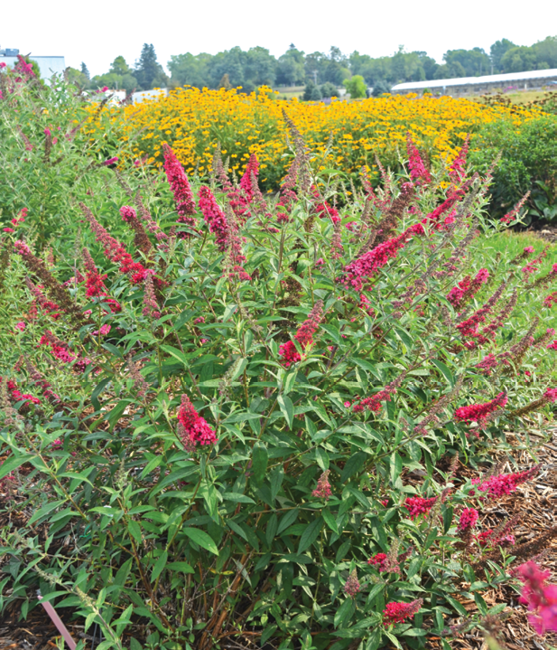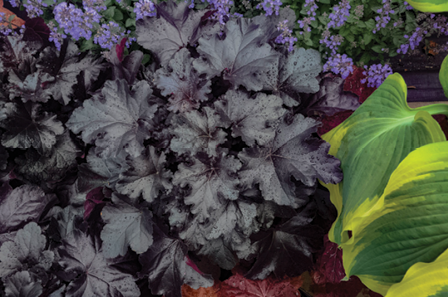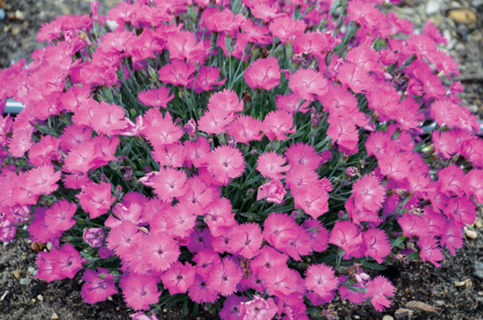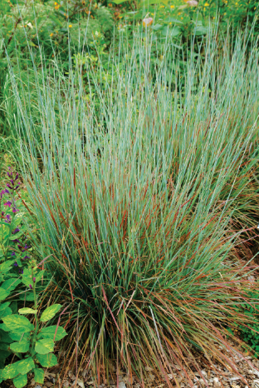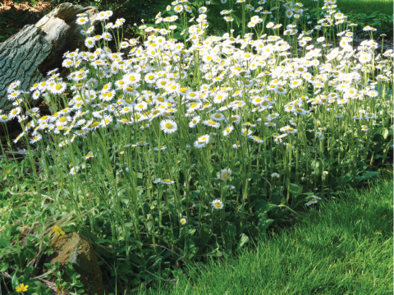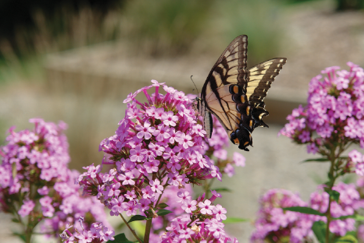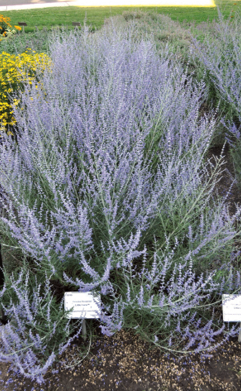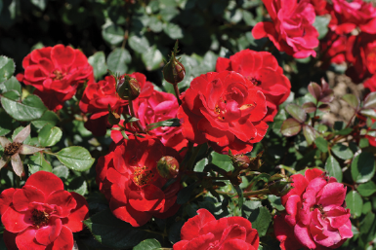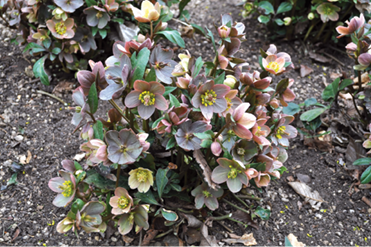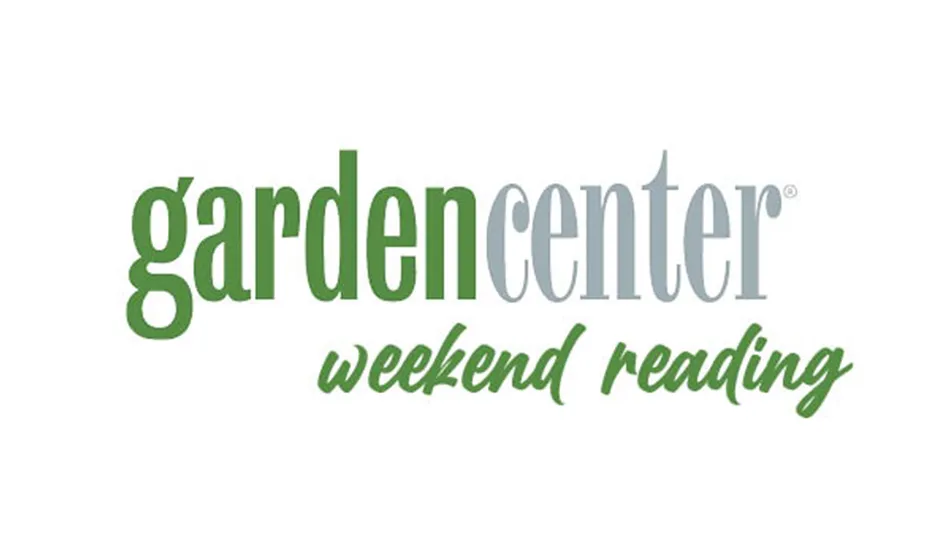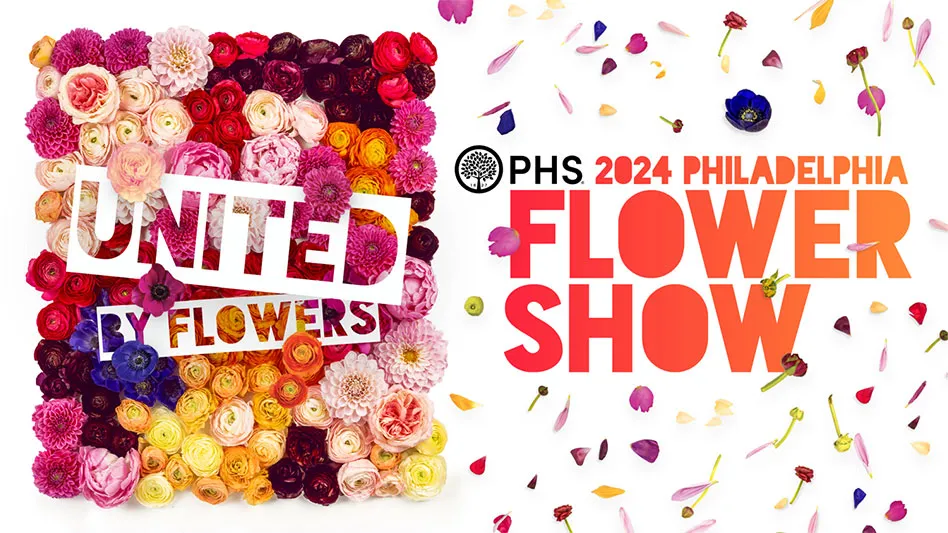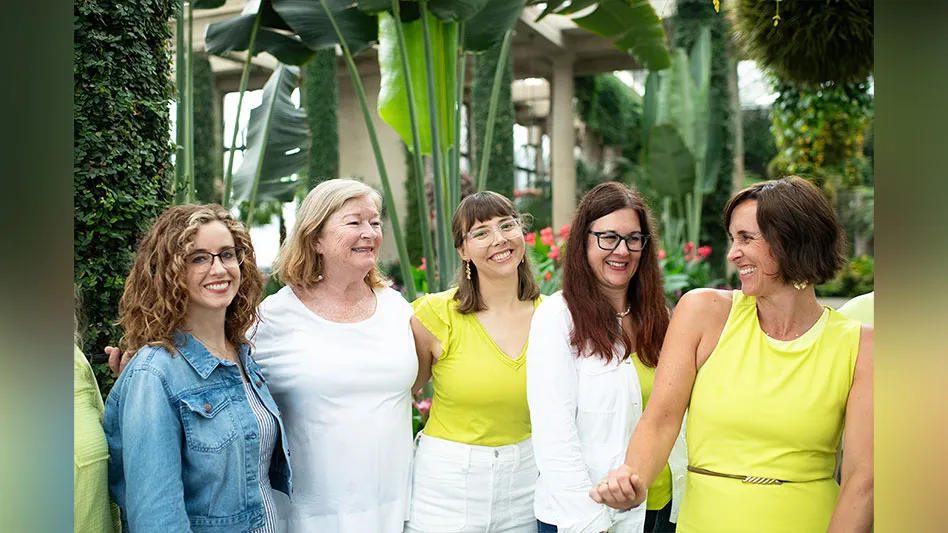When it comes to perennials, it pays to stay abreast of what is new and improved as well as the tried and tested. It also doesn’t hurt to take an honest look at the perennials that have fallen out of favor. Here’s how growers are using these criteria to bring to market some pretty amazing plants that are more pleasing to the eye, more functional in the landscape, and are likely to stay in the market for the next several years.
New in the Midwest
Selections From Walters Gardens
Celebrating its 70th anniversary in the perennial business, Walters Gardens in Zeeland, Mich., continues to keep up with the trends in perennials by offering carefully selected options to greenhouse growers. Renowned breeder Hans Hansen is Walters’ resident plant expert as well as head of its hybridizing program. Under his direction, Walters is offering new varieties of perennials that meet the demand for plants that are more resistant to diseases such as mildew, while displaying a better habit in the landscape.
It’s out with the old and in with the new at Walters Gardens, as they offer new and improved cultivars of popular perennials. For instance, they’ve improved upon the older hardy hibiscus varieties, such as ‘Lord Baltimore,’ ‘Fireball’ and ‘Lady Baltimore’ by adding ‘Cranberry Crush’ and ‘Starry Starry Night.’ The two hibiscus selections are fuller and more compact — traits that customers look for these days.
The tall buddleia varieties like ‘Black Knight’ and ‘Nanho Blue’ are being switched out for cultivars that are more compact and have more interesting colors, including ‘Crown Jewels’ and ‘Prince Charming’ (pictured). They’ve also replaced echinacea varieties like ‘Kim’s Knee High’ and ‘Magnus’ with more compact ones that come in an array of amazing colors, including ‘PowWow Wild Berry’ and Sombrero Salsa Red.
Karin Walters, marketing director at Walters Gardens, had the enviable task of selecting six of her favorite selections based not only on her decidedly subjective criteria, but on what customers are looking for in terms of color, habit and disease resistance. All of these are new for 2016-2017, except for Russian Sage ‘Denim ‘n Lace,’ which was introduced in 2015-16.
1. Heuchera ‘Black Pearl’: Walters says that some varieties of heuchera in the past tried to come close to true black, but were more of a dark brown. This one is a true black, and more vigorous than past varieties, which should be good news for landscapers. It has ruffled leaves “and a lot of character.” It is part of the Primo Series from Proven Winners.
2. Buddleia ‘Prince Charming’: The description for this new offering says it has cherry-pink colors you can “spot from a mile away.” Since it doesn’t flower on older wood, buddleia is technically a perennial, though it looks a lot like a shrub.
3. Phlox ‘Fashionably Early Flamingo’ and ‘Fashionably Early Princess’: Walters has a new series of phlox hitting the market that resists the dreaded mildew while giving people what they want from this variety: a tall plant with robust flowers that will bloom a little longer than your typical phlox. ‘Princess’ is the earliest to bloom of the series.
4. Perovskia atriplicifolia ‘Denim ‘n Lace’: This cultivar was new to Walters last year and is currently their top-selling variety. It does well in dry soil and is most adaptable to the Midwest and Northeast, according to Walters. The more compact variety won’t flop over by midseason and will stand right back up after a weather event, such as a heavy rain or hail. It has dense flowers and a lacy feel with a silvery-green foliage.
5. Veronica ‘Blue Skywalker’: The name says it all. While some cultivars are getting shorter, Walters says at 28 to 30 inches tall, this one will stand boldly above many of the plants in a landscape or cottage garden.
Tried and tested in the East
Selections from North Creek Nurseries
There is an emphasis on the tried and tested and also the new and different at North Creek Nurseries in Landenberg, Pa. The 25-year-old nursery specializes in plants for the traditional horticultural markets as well as the ecological/landscape (LAND) sector.
North Creek’s largest demand is for their horticultural greenhouse plants. However, they’re seeing tremendous growth in providing plants for the ecological/landscape sector, such as for habitat restoration, wetland buffering and soil erosion. It’s a combination that appears to be a good working business model for the nursery, which has recently added a greenhouse and upgraded its technology and material handling systems.
“People are looking for plants that provide not only aesthetics, but serve a function in the landscape,” says Carrie Wiles, marketing manager for North Creek.
One of their best-sellers in this category is Carex pennsylvanica, a plant that provides “eco-services” for different ecological restoration projects. They’ve also noticed an increase in the sale of ferns, which adapt well to dry, shady areas. They’re seeing continued interest in these tried-and-true perennials: Helleborus ‘Brandywine,’ Geranium ‘Rozanne’ and Calendula x intermedia ‘Phenomenal.’
To maintain an efficient, cost-effective operation, North Creek flags plants that just aren’t selling — a practice that can get overlooked in the rush of things. While it’s not a hard-and-fast rule, any plants selling fewer than about 50 flats per season are removed from their planting program. Future perennial offerings are based on something that resembles a vetting process whereby plants are evaluated by several different methods, including feedback from sales staff and growers as well as how they perform in their own trial gardens.
Here are six plants recommended by North Creek Nurseries staff that should go the distance:
1. Monarda punctata: This beautiful spotted bee balm selection is also a valuable ecological species for attracting pollinating insects. It also resists bee-bothering mites due to a high concentration of thymol in the tissue of the plant. It’s of special benefit to the endangered Karner blue butterfly common in the Northeast.
2. Phlox paniculata ‘Jeana’: This newcomer was found by and named after Jeana Prewitt of Nashville, Tenn. It has “outstanding mildew resistance” and varying shades of sweetly scented, lavender-pink flowers for a showy display from midsummer through early autumn. ‘Jeana’ also attracts beneficial insects, including pollinators.
3. Hydrangea arborescens ‘Haas’ Halo’: This selection has deep, bluish-green, leathery foliage with huge (up to 14 inches) pure white, wide lace cap blooms that stay upright on sturdy stems. It’s a hardy cultivar that grows 3 to 5 feet tall.
4. Schizachyrium scoparium ‘Standing Ovation’: This is a warm-season grass that’s suitable for poor, dry soils. It has spiky, bluish-green stems that look attractive all summer. It also adds autumn interest when it transitions to an eye-popping display of oranges, reds, yellows and purplish-browns. The seed heads swaying in the wind will provide winter interest before being cut back in spring.
5. Eriogonum allenii ‘Little Rascal’: This long-flowering shale barrens buckwheat variety is described as being a durable plant that thrives in urban plantings, rock gardens and consistently dry areas. It has a tidy, low-growing habit at 18 to 24 inches tall. The leaves are gray-green and paddle shaped. Expect bursts of golden yellow umbels that age to various shades of bronzy orange in the late summer. It also provides habitats and nectar for butterflies, honeybees, bumblebees and hummingbirds. Customers can also enjoy it as a cut flower.
6. Erigeron ‘Lynnhaven Carpet’: This cultivar was selected by North Creek staff for its relatively large grey-green pubescent foliage, dense, mat-forming habit and “astonishing” adaptability to challenging growing conditions and sites. In early May, individual flower stalks give rise to lightly tinted lavender flowers with a yellow inner eye. Foliage remains less than 6 inches tall and forms a tight groundcover, while flowering stems top out at just over 1 foot tall.Trialing in the West
Selections from Colorado State University
It’s always nice to have university horticulture programs weigh in on the latest and greatest in the plant world, not to mention tapping into their expertise, in this case, searching for the best perennials for greenhouse growers.
Sibling publication Greenhouse Management reached out to Dr. James Klett, director of the Plant Environmental Research Center (PERC) on Colorado State University’s campus to add to the list of promising perennials. The trial gardens have been in existence at Colorado State since 1971; Klett came on board in 1992.
Here is Klett’s list of perennials that show promise due to their improved vigor, disease resistance and aesthetic appeal:
1. Festuca glauca Beyond Blue: Trials of this newcomer from Skagit Gardens didn’t disappoint. It is said to have the best blue color out there. In trials, it proved to be uniform even after a couple of hard Colorado winters. Judges also liked that it didn’t open in the center, a trait that affects the otherwise beautiful appearance.
2. Helleborus x ballardiae Merlin: Also from Skagit Gardens, this helleborus cultivar is more compact than other species of the plant. The flowers emerged with pink color that is brighter than most and then matured to shades of dusty rose. It was also given kudos for being a low-maintenance selection.
3. Perovskia ‘Little Lace’: This offering from Star Roses & Plants/The Conard-Pyle Co. combines a shorter plant with great uniformity. It’s a significant improvement over the typical sprawling Russian sage we’ve come to know and a good choice for xeriscaping.
4. Rosa x hybrida Sunrosa Red: This selection from Suntory Flowers has striking red blooms from June to October and a compact growth habit.
5. Brunnera macrophylla ‘Alexander’s Great’: Released by Terra Nova Nurseries, this shade-loving plant is a “real monster,” Klett says. The large growth and wide leaves add structure to a shade garden while showing off the silver leaves and eventually blue flowers.
6. Veronica ‘Novaverpin,’ Pink Moody Blues: Another offering from Star Roses & Plants/The Conard-Pyle Co., Pink Moody Blues’ flowers are noted for having “exceptional uniformity and perfect spikes of light pink flowers that helped create an overall impressive display,” according to Colorado State University Flower Trial Garden’s winner notes. The entire Moody Blues series was noted for superior performance.
There are many other new selections available that will help build more profits into your perennial program. However, these promising perennials, carefully selected by experts in the field — and greenhouse — are sure to meet the demand for today’s customers looking for the qualities they espouse.

Explore the December 2016 Issue
Check out more from this issue and find you next story to read.
Latest from Garden Center
- Weekend Reading 5/17/24
- GardenComm 2024 Annual Conference registration is open
- Landmark Plastic celebrates 40 years
- Proven Winners introduces more than 100 new varieties for 2025
- Weekend Reading 5/10/24
- The Family Business, Part 2: Agreeing (and disagreeing) on capital investments
- Registration opens for Darwin Perennials Day
- Weekend Reading 5/3/24
